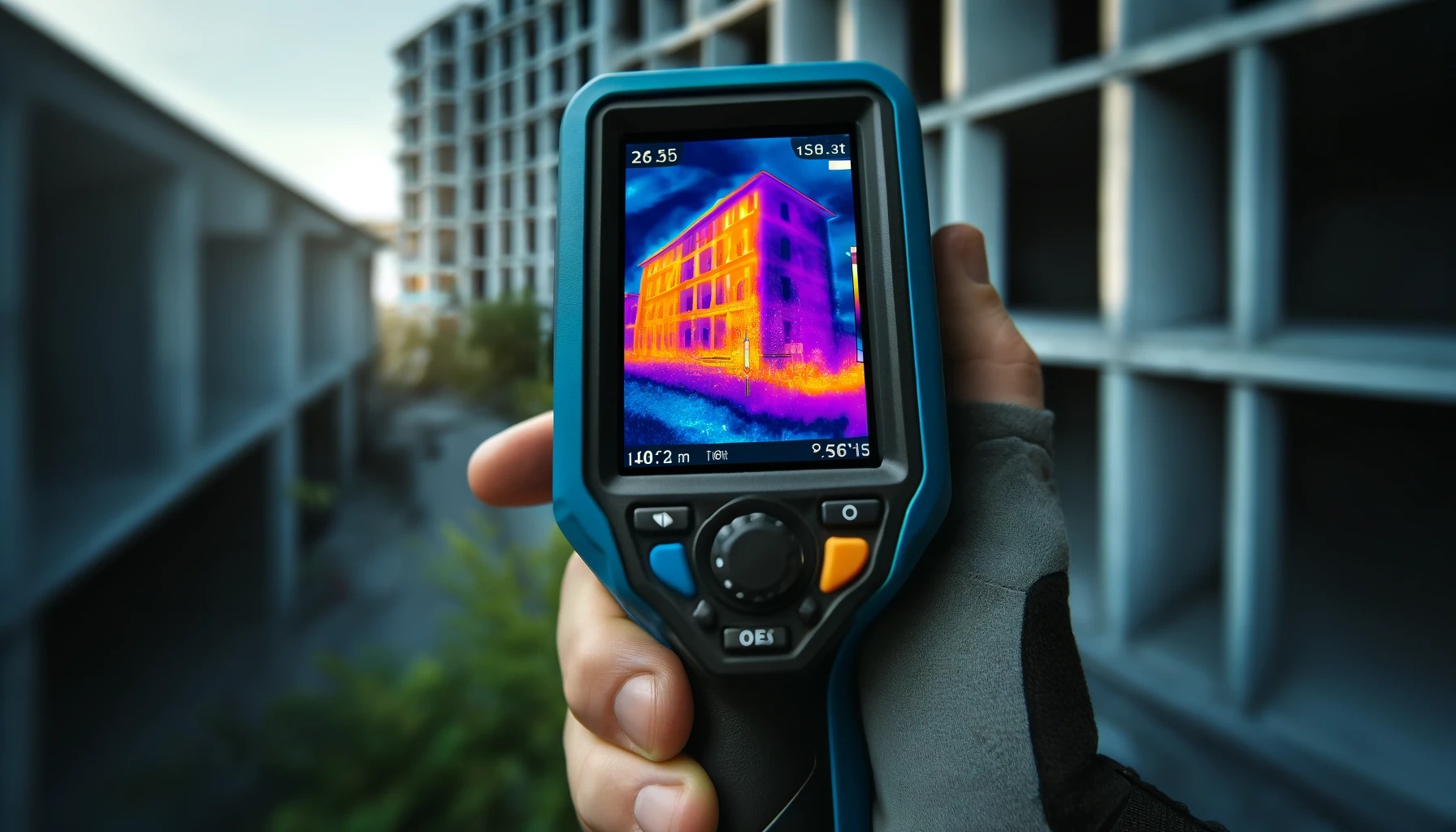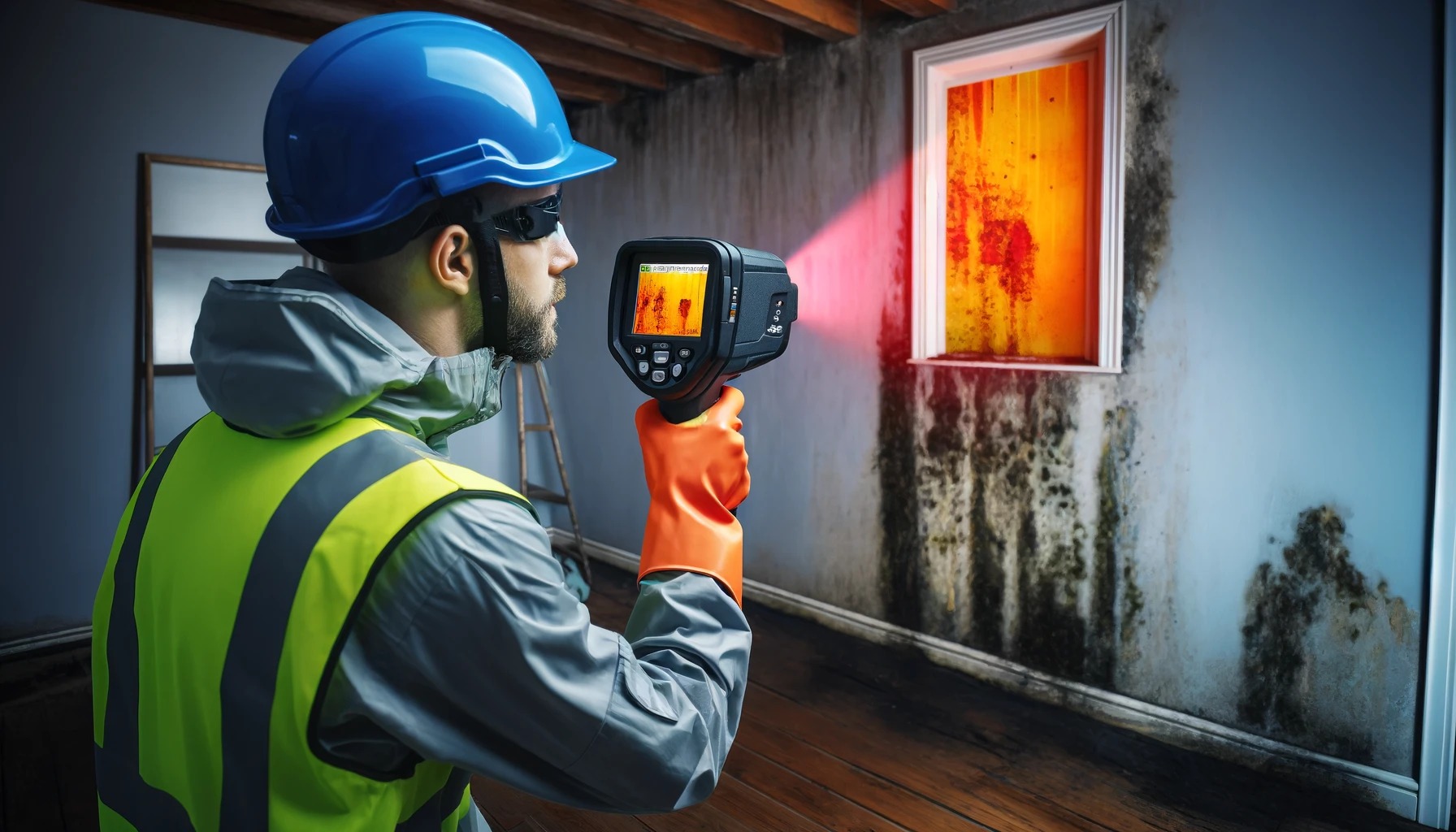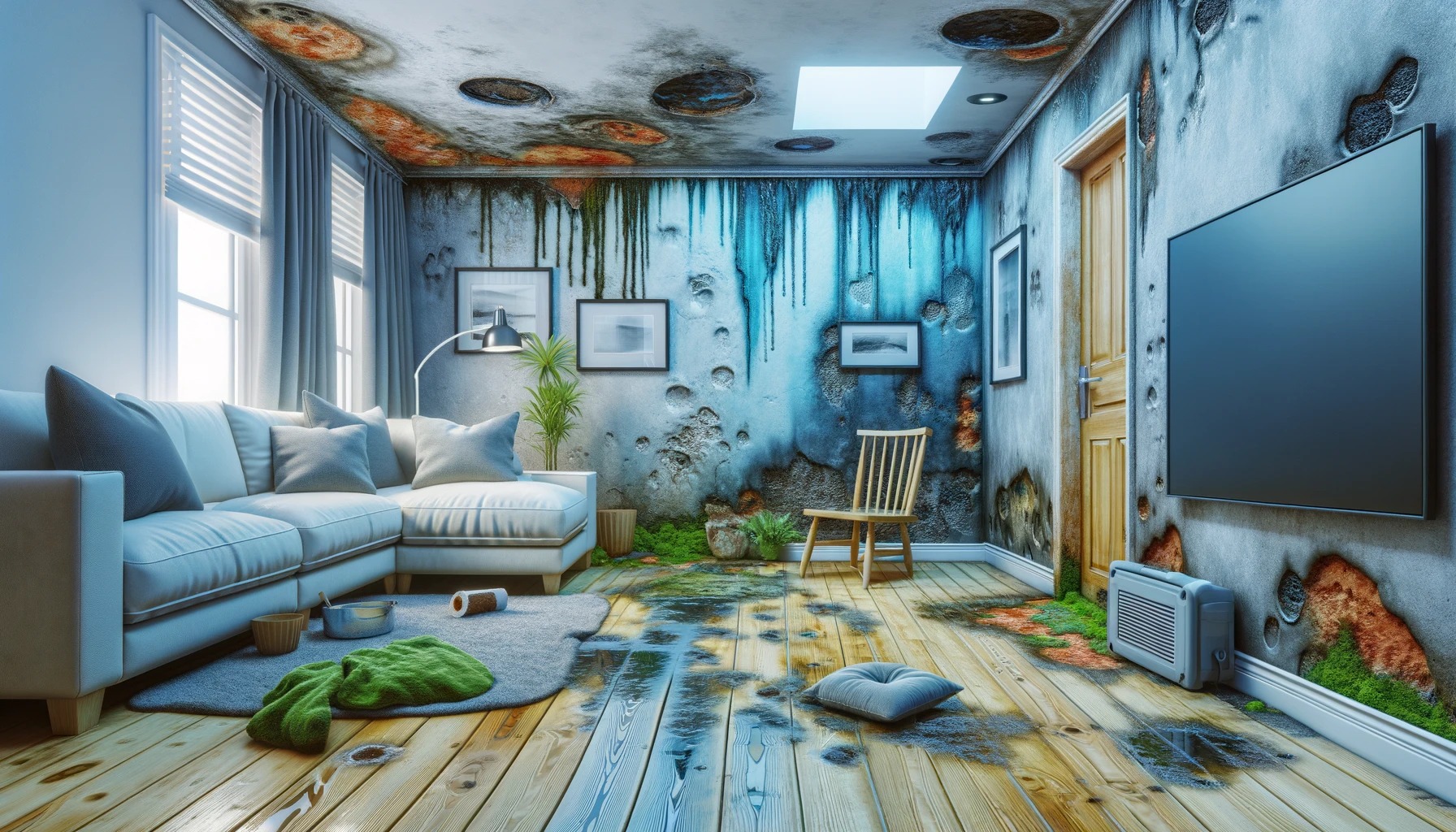In the realm of building inspections, infrared technology has emerged as a game-changer, especially in detecting hidden mold. This advanced method offers a non-invasive way to spot potential mold growth areas by identifying temperature variations in building materials. It’s a critical tool for inspectors, allowing them to pinpoint moisture issues that could lead to mold, without the need for disruptive probing or sampling. As health concerns related to mold exposure grow, understanding and utilizing infrared technology in mold inspection becomes increasingly important for ensuring safe indoor environments.
Before getting into the advantages of infrared technology in mold detection, explore comprehensive services and insights on mold inspection for maintaining a healthy living environment.
Infrared Technology

Infrared technology works by detecting temperature variations invisible to the naked eye. It captures different levels of infrared light, which all objects emit. Unlike visible light, this spectrum reveals the heat signature of surfaces.
This tech transforms these signatures into images. These images show areas of warmth and cold. Experts use them to spot problems in buildings and machines.
Evolution
Infrared technology has come a long way since its inception. Initially, it was for military use to detect enemies at night. Now, it’s vital in many fields.
It helps in weather forecasting and medical diagnostics. Its use in building inspections is also groundbreaking. It spots electrical faults and insulation issues without destruction.
Mold Inspection
For mold inspection, infrared is a game changer. Mold thrives in moist environments often hidden from view. Through temperature readings, infrared cameras pinpoint potential moisture accumulations.
They can reveal leaks behind walls or under floors without drilling or cutting. This makes mold detection faster, safer, and more accurate.
To get started with mold detection in your home, consider taking advantage of a free virtual mold inspection, a convenient preliminary step to identify potential mold issues.
Thermal Imaging for Moisture Detection
Thermal imaging cameras detect temperature variations on surfaces. These variations can indicate moisture problems not visible to the naked eye. The technology spots differences in temperatures where water has infiltrated structures.
Infrared technology highlights areas of concern. It shows cooler areas on an image, suggesting possible water intrusion. Professionals use this data to pinpoint moisture without damaging walls or other structures.
Mold Prevention
Identifying moisture early is key to preventing mold growth. Mold thrives in damp environments. Thermal imaging locates these risky areas before mold becomes a major issue.
The process involves scanning walls and ceilings for temperature changes. A cooler temperature differential often signals hidden moisture. This allows for quick action, reducing the risk of extensive mold damage and structural issues.
Importance of Early Detection
Early detection of water damage is crucial. It saves time and money by avoiding larger repairs later on. By identifying water intrusion early, property owners can address the source of moisture.
This proactive approach prevents long-term damage to buildings. It also maintains a healthier indoor environment by reducing mold risks.
Detecting Hidden Mold with Infrared

Infrared technology plays a crucial role in mold inspection. It does not see mold directly. Instead, it spots the conditions that let mold thrive.
This tech finds areas where moisture hides. Moist places are perfect for mold to grow. By spotting these zones, inspectors can then look closer for mold.
Uncovering Mold
Infrared imaging shines by finding hidden mold colonies. It shows where walls or floors might be wet.
For example, if an area inside a wall is cooler on the infrared camera, it might mean there’s moisture. And where there’s moisture, mold could be hiding. Inspectors use this clue to check those spots more carefully.
Comprehensive Inspections
In hard-to-reach places, infrared is invaluable. Think about spaces behind walls or above ceilings. These are tough spots for inspectors to reach.
But with infrared, they can see signs of moisture without tearing anything apart. This makes mold inspections faster and less invasive.
Once potential mold issues are identified, professional mold removal services are crucial to ensuring the safety and integrity of your indoor environment.
Benefits of Infrared Mold Detection

Infrared technology allows for non-invasive moisture detection. This means inspectors can find water without cutting into walls. It’s a big advantage.
They use special cameras to see heat. Wet areas are cooler, so they stand out on the camera. This method is quick and doesn’t damage property.
Hidden Mold Sources
Finding hidden mold is easier with infrared. Mold loves dark, wet places. These spots are hard to see with just eyes.
Infrared cameras spot these hidden spots by showing temperature differences. They can see behind walls or under floors where mold might grow unseen.
Water Damage Assessment
Infrared inspections are great for looking at water damage. They show how far water has spread in a building.
This helps decide what needs fixing. It makes sure no wet spots are missed. This is important for stopping more mold from growing.
Dryness Verification
After fixing water damage, it’s crucial to make sure everything is dry. Infrared technology checks this easily.
It shows if any moisture is left. This ensures the area is safe from more mold growth after repairs are done.
Legal Evidence
etimes, buildings have issues because they were not made right or got damaged by water. Infrared images can serve as legal evidence in these cases.
They provide clear proof of moisture or construction problems. This can help in court or insurance claims, showing exactly where and how a problem exists.
Beyond Mold: Insulation and Electrical Issues
Infrared technology shines beyond just uncovering mold problems. It plays a crucial role in detecting insulation failures. When insulation does not perform as it should, homes lose heat or cool air. This leads to higher energy bills and uncomfortable living spaces. Infrared cameras can spot where insulation is missing or inadequate by showing temperature differences on surfaces like walls and ceilings.
These tools make it easy to find areas that need improvement. Fixing these issues means a warmer house in winter and a cooler one in summer.
Electrical Problems
Electrical issues are another area where infrared technology excels. Faulty wiring and overheated components are serious risks. They can cause fires if not addressed. With thermal imaging, electricians can see hot spots invisible to the naked eye.
This method helps prevent potential disasters before they happen. It ensures the safety of a building’s occupants and protects against costly damages.
Energy Audits
Thermal imaging is vital for energy audits too. It identifies heat loss or cold air infiltration spots around doors, windows, and other areas. By pinpointing these problems, homeowners can take steps to seal leaks and improve insulation.
Addressing these issues enhances overall building health and boosts energy efficiency. It saves money on utility bills in the long run.
Enhancing Home Safety via Infrared
Infrared technology plays a crucial role in identifying potential fire hazards within the home. It can spot loose electrical connections and overheated breaker boxes that might not be visible to the naked eye. These issues, if left unchecked, could lead to devastating fires.
Technicians use infrared cameras to scan electrical systems. They look for unusually hot spots. These spots indicate a risk of fire. Early detection allows homeowners to address these dangers before they escalate.
Preventive Inspections
The preventive aspect of infrared inspections is significant. It helps avoid costly and dangerous electrical malfunctions. By revealing hidden problems, homeowners can take corrective action early on.
Infrared imaging serves as a diagnostic tool. It uncovers issues that could lead to electrical failures. This includes overloaded circuits and faulty wiring. Fixing these problems early can save money and prevent potential disasters.
Safety Standards
Ensuring homes meet safety standards and regulations is another benefit of infrared technology. It provides a detailed view of a home’s electrical system health.
Inspectors use this technology to verify compliance with safety codes. They ensure that all electrical components are functioning properly and pose no threat to the inhabitants’ well-being. This level of scrutiny ensures that homes are safe places to live in, contributing significantly to indoor air quality.
Final Remarks
Infrared technology revolutionizes mold inspection, making it more accurate and less invasive. Experts leverage this advanced tool to detect hidden moisture and mold, ensuring homes are safe and healthy. The benefits extend beyond mold detection, including identifying insulation flaws and electrical hazards. This technology enhances comprehensive building health inspections, improving living conditions significantly.
For homeowners and property managers, adopting infrared technology for mold inspection is a wise decision. It offers a thorough understanding of a property’s condition, promoting proactive maintenance. Readers are encouraged to consider infrared inspections to safeguard their investments and well-being. Explore further how this innovative approach can transform property care.
To safeguard your home against mold and related issues, find a reliable inspection service near you by visiting our mold inspection near me page, offering localized support and solutions.
Frequently Asked Questions
How does infrared technology help in mold inspection?
Infrared technology, through thermal imaging, detects temperature variations on surfaces, indicating potential moisture areas where mold is likely to grow. This non-invasive method quickly identifies hidden mold problems.
What are the benefits of using infrared for mold detection?
Infrared mold detection offers a precise, efficient, and non-destructive way to locate hidden mold. It reduces the need for extensive physical inspections and prevents unnecessary damage to properties during the search for mold.
Can infrared technology detect other issues besides mold?
Yes, beyond identifying mold, infrared technology can reveal insulation deficiencies and electrical faults by highlighting temperature differences. This capability makes it a versatile tool for comprehensive building health assessments.
How does thermal imaging work for moisture detection?
Thermal imaging cameras capture temperature variations on surfaces. Moist areas have different temperatures than dry ones. By analyzing these temperature differences, inspectors can pinpoint moisture-prone areas that may harbor mold.
Is enhancing home safety possible with infrared technology?
Absolutely. Infrared technology not only identifies hidden mold but also detects insulation flaws and electrical hazards. By addressing these issues, homeowners can significantly enhance their living environment’s safety and comfort.
What improvements does technology bring to living conditions?
Technology like infrared inspection enables early detection of mold, poor insulation, and electrical issues. Addressing these problems promptly improves air quality, energy efficiency, and overall safety, leading to healthier living conditions.
